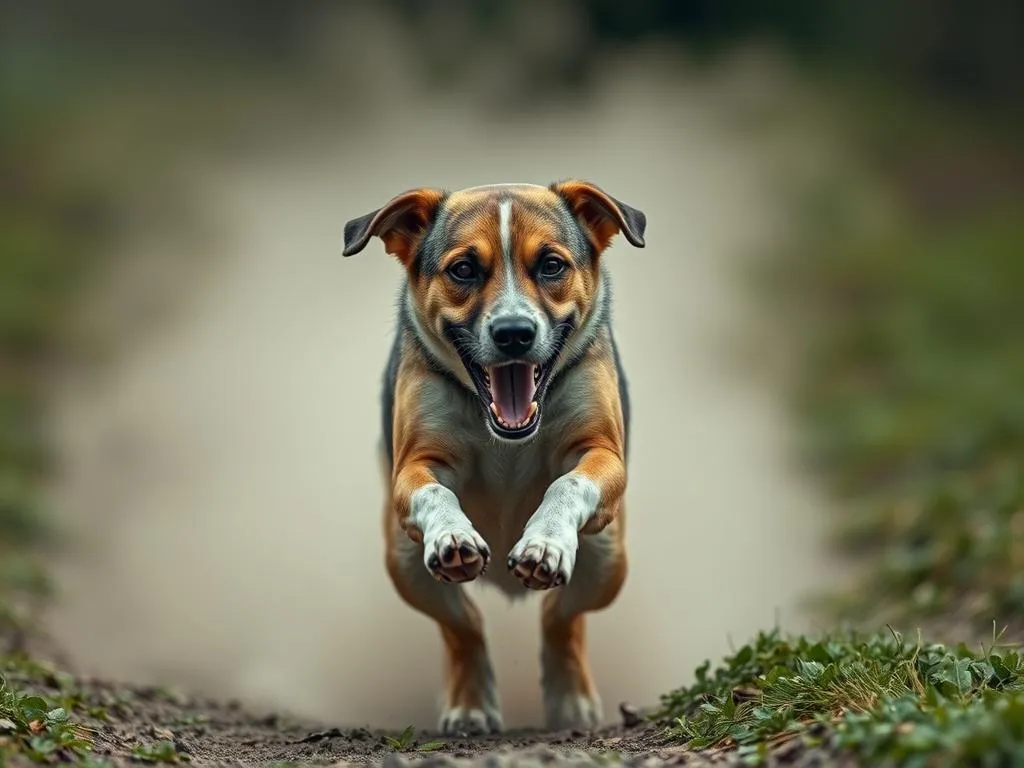
Introduction
Understanding prey drive in dogs is essential for dog owners who want to foster a harmonious relationship with their pets. Prey drive refers to the innate instinct to chase and capture prey, which varies significantly among different breeds. Recognizing how this instinct influences behavior can be pivotal in encouraging positive interactions and ensuring the well-being of your dog.
In this blog post, we will delve into the concept of prey drive, its historical context, how to recognize it in your dog, and its implications for behavior and training. This comprehensive guide aims to equip you with the knowledge necessary to manage and nurture your dog’s instincts effectively.
What is Prey Drive?
Prey drive is a term used to describe a dog’s instinctual behavior to chase, capture, and sometimes kill animals that are perceived as prey. This drive is deeply embedded in the genetics of many dog breeds, stemming from their ancestral roles as hunters and herders.
Historically, domesticated dogs evolved from wild canines, where hunting was essential for survival. Over the generations, specific breeds have been developed with heightened prey drive for particular tasks, such as hunting, herding, or guarding. For example, breeds like the Greyhound and the Border Collie exhibit strong prey drives due to their historical roles in hunting and herding.
The level of prey drive varies widely among breeds. For instance, terriers are known for their intense hunting drives, while breeds like the Great Dane may exhibit minimal prey drive. Understanding these differences can help owners tailor their training and activity plans to suit their dog’s innate behaviors.
Recognizing Prey Drive in Your Dog
Identifying signs of high prey drive in your dog is crucial for effective management and training. Dogs with strong prey drive often display specific behaviors and physical cues.
Signs of High Prey Drive
- Behavior Indicators: Dogs with high prey drive may engage in stalking, chasing, or pouncing behaviors. They may show heightened excitement when they see small animals, such as squirrels or birds.
- Physical Signs: Pay attention to your dog’s body language. A dog with a high prey drive may exhibit a stiff body posture, intense focus, and quick movements when spotting potential prey.
Assessing Your Dog’s Prey Drive
To assess your dog’s level of prey drive, you can conduct practical exercises and observations, such as:
- Taking your dog to a park with wildlife to observe their reactions.
- Using toys that mimic prey, like squeaky toys or balls, to see how they respond.
- Noting their interactions with other animals, both during play and in more serious contexts.
Recognizing your dog’s prey drive is not just about understanding their instincts; it also plays a vital role in training and safety. By identifying these behaviors early on, you can implement appropriate training strategies to manage their impulses effectively.
The Impact of Prey Drive on Dog Behavior
Prey drive can significantly influence a dog’s behavior in various scenarios, affecting everyday activities, interactions with other pets, and even their safety.
Effects on Everyday Activities
For dogs with a high prey drive, activities like walking and playing can present challenges. They may become easily distracted by potential prey, making walks more difficult. This can lead to pulling on the leash, sudden bursts of speed, or difficulty focusing on commands.
Prey Drive and Aggression
Understanding the link between prey drive and aggression is crucial for dog owners. Dogs with high prey drive may exhibit aggressive behaviors towards smaller animals, which can manifest during play or in stressful situations. It is essential to distinguish between predatory aggression and other forms of aggression, such as fear-based or territorial aggression.
Managing Prey Drive in Multi-Pet Households
In households with multiple pets, a high prey drive can lead to conflicts. Dogs may see smaller pets as prey, leading to dangerous situations. Effective management strategies include:
- Supervised interactions between pets, especially during initial introductions.
- Providing safe spaces where smaller pets can escape from larger dogs.
- Engaging dogs in activities that occupy their prey drive without targeting other pets.
Prey Drive and Training
Training is a critical aspect of managing your dog’s prey drive. Understanding how this instinct plays into training methods can help you create a more effective and enjoyable experience for both you and your dog.
Role of Prey Drive in Training Methods
Prey drive can be harnessed positively during training sessions. Many dogs are motivated by movement or chasing, making it an ideal element to incorporate into training routines.
Recommended Training Techniques
-
Positive Reinforcement Strategies: Use treats and praise to reward your dog for focusing on you rather than potential prey. This technique encourages your dog to make positive choices.
-
Redirecting Prey Drive: Engage your dog in activities that channel their prey drive appropriately, such as fetch or agility exercises. These activities provide a constructive outlet for their instincts.
-
Professional Help: If you find it challenging to manage your dog’s prey drive, seeking assistance from professional trainers or behaviorists can be beneficial. They can provide tailored strategies and support.
Health and Safety Considerations
A high prey drive can pose various health and safety risks for your dog. Understanding these risks and implementing strategies to mitigate them is vital for responsible pet ownership.
Potential Risks Associated with High Prey Drive
- Escaping and Roaming: Dogs with high prey drive may attempt to escape from yards or homes to chase after perceived prey, leading to potential injuries or getting lost.
- Interactions with Wildlife: Engaging with wildlife can lead to dangerous encounters, both for your dog and for the animals involved.
Strategies for Keeping Your Dog Safe
-
Leash Training: Proper leash training can help you maintain control during walks. Consider using a front-clip harness to discourage pulling.
-
Containment Options: Ensure your yard is secure with high fences and gates to prevent escapes. Consider using an underground fence for additional security.
-
Emergency Response Plans: Have a plan in place for emergencies, such as your dog getting loose. Ensure your dog is microchipped and wears a collar with identification tags.
Enrichment and Exercise for Prey-Driven Dogs
Providing adequate physical and mental stimulation is crucial for dogs with high prey drive. Engaging them in activities that harness their instincts can lead to a happier, healthier pet.
Importance of Physical and Mental Stimulation
Dogs with high prey drive require more than just walks; they need engaging activities that challenge them both mentally and physically. Boredom can lead to unwanted behaviors, including destructive chewing or excessive barking.
Activity Suggestions
-
Interactive Toys and Games: Puzzle toys can stimulate your dog’s mind while allowing them to engage their prey drive in a controlled manner.
-
Structured Playtime: Schedule regular playtime with activities that challenge your dog, such as fetch, tug-of-war, or agility courses.
-
Benefits of Socialization: Allowing your dog to socialize with other dogs can provide essential play opportunities, helping them expend energy and learn appropriate social behaviors.
Case Studies: Prey Drive in Action
Real-life examples can provide valuable insights into the complexities of prey drive in dogs. Below are a few case studies that illustrate the challenges and successes faced by dog owners.
Positive Outcomes through Training and Management
One case involved a Border Collie named Max, who exhibited a strong prey drive towards local wildlife. His owner worked with a professional trainer to implement a positive reinforcement program. By redirecting Max’s energy into agility training and structured fetch games, they channeled his instincts positively, leading to a more manageable behavior during walks.
Challenges Faced by Owners
Conversely, a Labrador Retriever named Bella had difficulty interacting with smaller pets in her household. Her owner struggled to manage her strong prey drive, which led to confrontations. After consulting with a behaviorist, they established supervised play sessions and created safe spaces for the smaller pets. Over time, Bella learned to coexist peacefully with her housemates.
Conclusion
Understanding prey drive in dogs is crucial for fostering a safe and enriching environment for your pet. By recognizing the signs of prey drive, managing its impact on behavior, and implementing effective training techniques, you can help your dog thrive.
As responsible dog owners, it is our duty to observe and adapt to our dogs’ behaviors. With proper understanding and management, we can ensure our pets live fulfilling lives while keeping them safe and happy.
FAQs
What is prey drive in dogs?
Prey drive is the instinctual behavior exhibited by dogs to chase and capture prey. It varies among breeds and can influence behavior, training, and interactions with other animals.
How can I tell if my dog has a high prey drive?
Signs of high prey drive include stalking, chasing, and intense focus on small animals. Physical cues such as stiff body posture and quick movements can also indicate a strong prey drive.
Can prey drive be managed through training?
Yes, prey drive can be managed through positive reinforcement training techniques and redirecting the dog’s instincts towards appropriate activities like fetch and agility exercises.
Are there risks associated with high prey drive?
Yes, dogs with high prey drive may escape, roam, or engage in dangerous interactions with wildlife. Implementing safety measures is essential for their well-being.
When should I consult a professional trainer?
If you find it challenging to manage your dog’s prey drive, seeking help from a professional trainer or behaviorist can provide you with tailored strategies and support.
By understanding and addressing prey drive, you can enhance your dog’s quality of life and strengthen your bond with them.









